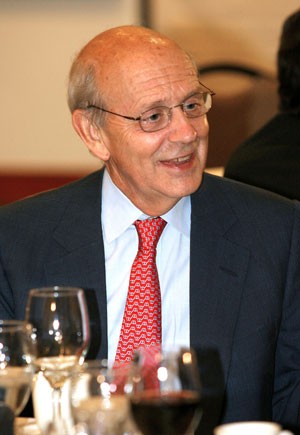Supreme Court Justice Stephen Breyer gave more than 100 students and faculty a taste of life on the United States’ highest law body yesterday morning.
Breyer spoke for an hour in the School of Music’s Crowder Hall, illuminating the day-to-day tasks of a justice for the many law students in attendance and discussing racial and gender diversity among lower-level clerks.
It was the third campus visit for a justice in the last two years. Ruth Bader Ginsberg gave a lecture in September 2006, and Sandra Day O’Connor taught a 10-day class on the Supreme Court the previous February.
Breyer began by giving an introduction of the Supreme Court and the mechanics of how things are done behind the scenes. In the second half of the talk, he answered questions from the audience.
When asked if there was a lack of diversity either racially or geographically among law clerks, Breyer said no.
“”I have not seen any lack of diversity among law clerks, but it does happen that more law clerks are from Yale, Harvard and Stanford,”” he said.
“”I also wish that there were more women law clerks,”” he added.
When Breyer was appointed 14 years ago, the one thing he said he wanted to see change was opinions with no majority. He blamed that on the “”human ego.””
Breyer said he heard he was going to be nominated to be a justice on CNN, and a few hours later he got a call from then-President Bill Clinton.
He said the confirmation process was stressful but necessary, and for the next two months after being nominated he had to read books of past hearings.
Earlier, he explained the case and argument process, and the writing process after a decision has been made.
When the court receives a case, justices read most of the briefs. Their law clerks read them as well and compile their information into memoranda.
“”They are not brief,”” Breyer joked. “”I don’t know why they are called ‘briefs.'””
The justices argue cases orally for two hours Mondays through Fridays, he said. On Thursdays, they think about what their decision will be and on Fridays they are back in conference and ready to vote.
A justice has six tools in making a decision, Breyer said. He or she first reads the text, and then looks at the history of the case.
Next, one looks at the the case background and the precedent. Then the justice determines what the Congressional purpose is. Finally, he or she thinks of what the consequences of the purpose will be.
The Justice told the audience that he spends a lot of his time in front of his word processor writing the case decisions.
“”The inside story of the court is that there is no inside story,”” he said.
Emily Parish, a third-year law student, enjoyed the talk.
“”I really enjoyed his sense of humor, and he answered some important and interesting questions,”” she said.
“”It is great that the school does stuff like this,”” she added.
Kara Ellis, a second-year law student, said the talk was “”extremely engaging and effective.””
The James E. Rogers College of Law sponsored the talk.









